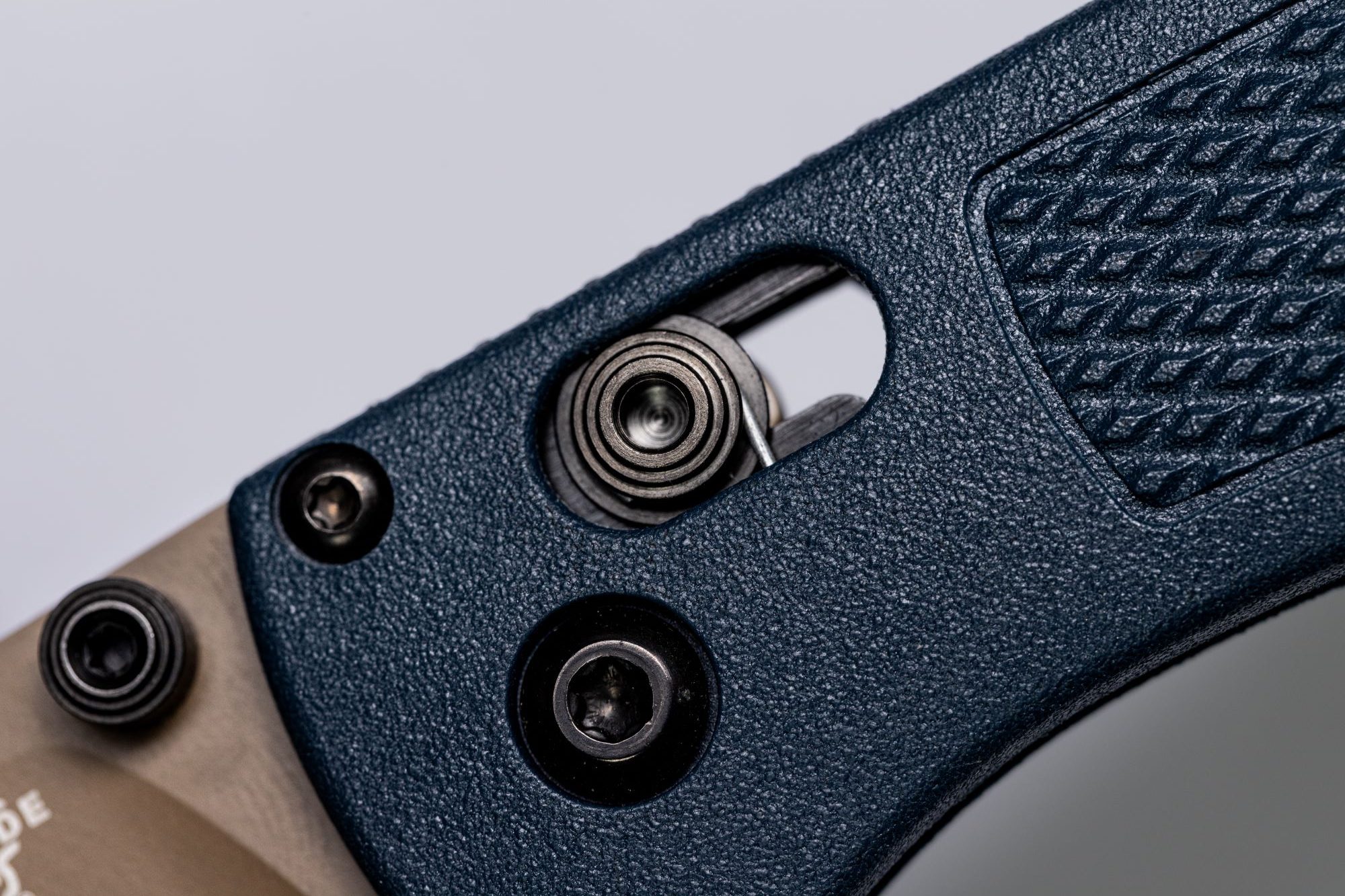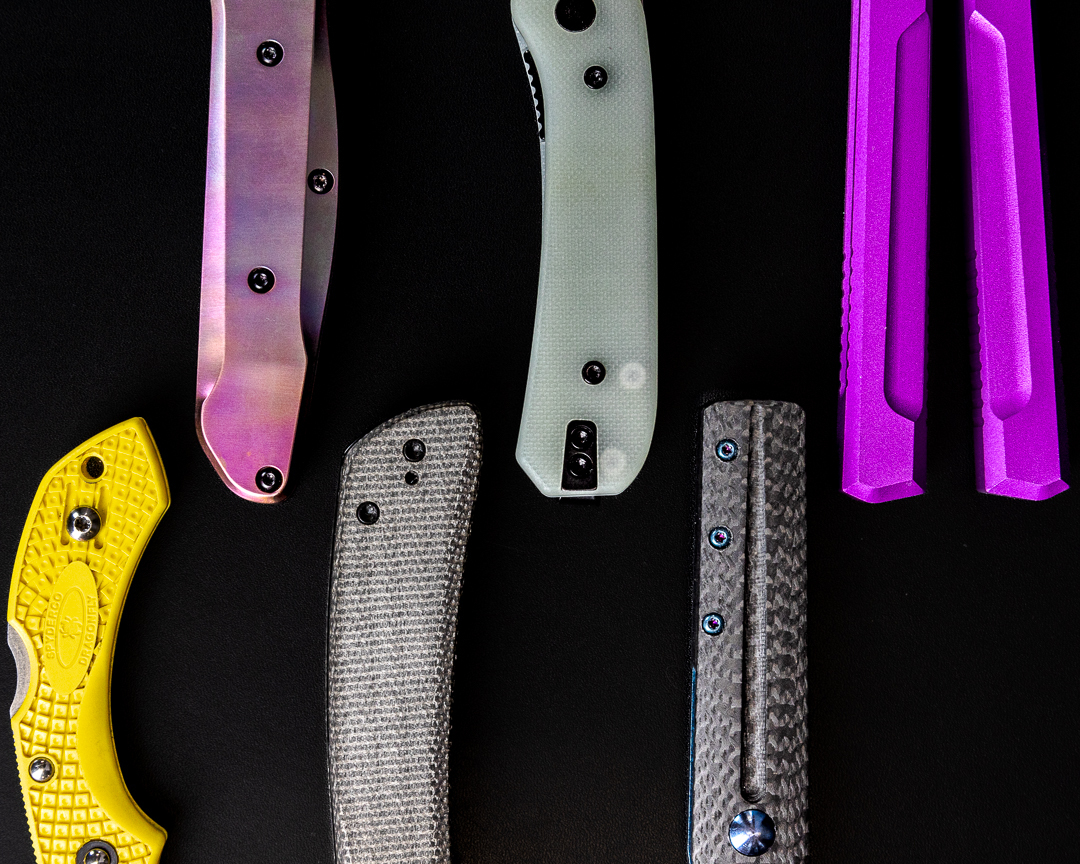For good reason, the most common blade steels found on knives are stainless. Most knives spend most of their lives in a pocket, sheath, or block, just waiting to be pulled out and used. Nobody likes rust on their knives, so stainless became the standard, but don’t discount the carbon steels! Yes, they do corrode much easier, but they offer some important advantages that should not be overlooked! We’ve compiled a list of ten good reasons you might choose a carbon steel!
1: Carbon steels are usually tougher.
As a rule of thumb, steel becomes stainless when it includes around 11% chromium, which forms an invisible film on the steel that prevents rust. Because chromium isn’t as tough as iron, it’s hard (though not impossible) to make stainless steel as tough as carbon. That’s why knives that see heavy chopping, prying, batoning, and other borderline-abusive tasks often use carbon steel for maximum toughness. As a side note, most axes use carbon steel for the same reason.
If toughness is what you’re after, carbon steels like CPM 3V, 5160, and 1095 are all tough-as-nails. Incidentally, most nails are also made of carbon steel!
2: Carbon steels take a patina.
Stainless steel doesn’t corrode as easily as carbon, which isn’t always a good thing. Through years of carrying and use, a carbon steel blade will darken and sometimes even change color, telling the tale of everything it ever cut. Stainless steel can’t do that. If your knife having its own memory sounds fun to you, carbon steel is your only option. Just make sure your patina never turns into rust!
1095, 52100, and CPM M4 all take a gorgeous patina.
3: Carbon steels are usually cheaper.
Carbon steels often have simple composition and don’t require the time and energy of their stainless brethren to work into products. With a shorter grocery list of ingredients and easier manufacturing, carbon is a great way to save some pennies on your steel. Or, if you’re building a skyscraper, you will literally save millions by using structural carbon steel instead of stainless.
Mora Knives and Opinel both use proprietary steels that perform way better than their price would suggest.
4: Carbon steels are much easier to forge.
When we think of knifemaking, we envision a skilled blacksmith forging a mighty blade in a roaring fire. Many of the high-carbide-fancy-dancy-particle-metallurgy-stainless-super-steels are so persnickety about heat that hand-forging is simply out of the question. For a fancy stainless, a CNC machine cuts out blanks, workers grind bevels and an edge, and the knife is done. This is called “stock removal”. It’s faster and makes a great knife, but it isn’t quite as primal as blacksmithing!

If you want a knife that’s spent some quality time between a hammer and an anvil, A2 and O1 are favorites of blacksmiths worldwide.
5: Carbon steels can be found all around you.
If you’re an aspiring knifemaker, you can be scared off by the pricing and rarity of fine stainless steel. But just about every leaf spring, I-beam, railroad spike, etc. can become a capable knife. Your only limitation is your own imagination! Knives are fun, but nothing is more fun than breathing some Mad Max-style life into an old scrap of metal and turning it into the knife of your dreams.

6: Carbon steels are easy to sharpen.
Carbon steels are often softer than stainless, allowing faster and easier knife sharpening. A “high-end” stainless will take you hours on a diamond stone, but a few minutes on a smooth river stone with a drop of spit can put a keen edge back on a carbon steel. If you don’t like spending hours sharpening your knife, carbon steel will keep you in the field instead of the workshop.
1095, A2, and O1 are great options for easy field knife sharpening!
7: Carbon steel and flint can create a spark.
If you strike a sharp piece of flint or chert along the spine of a carbon steel knife, it will throw a spark that can make you a fire. Not only will you be warm, but you’ll feel like a mountain man doing it! If you try that with a stainless steel knife, you’ll be eating your dinner raw.

If another layer of fire redundancy sounds nice (and it should), softer carbon steel like 1055, A2, and Mora’s carbon steel will spark all the livelong day!
8: It’s easier to make Damascus steels with carbon steels.
Because of easy welding, easy forging, and easy heat treating, carbon is your best friend in Damascus steel. Stainless Damascus does exist from makers like Devin Thomas, Chad Nichols, and Vegas Forge, but it’s difficult. The end product is gorgeous, and stainless, but it’s very expensive, often only found on custom knives. If you want waves in your knife, and rather wouldn’t sell a limb to get it, carbon is for you!

9: Carbon steels are readily available
Since carbon steels are so simple in composition, their recipes are often published in the American Iron and Steel Institue’s (AISI) records for anyone to make. That means the local steel foundry near you probably makes and sells it by the bar right out the front door!

10: Carbon steel is old school.
Everyone loves a throwback! Stainless steel is something of a newcomer to the knife world, and for centuries, carbon was your only option. Edged tools made of carbon steel built and destroyed countless empires, leveled forests, tamed mountains, and charted the course of history. But stainless doesn’t rust as easily. It’s really up to you.
This old steel was good enough for the men and women who built the world as we know it. Why wouldn’t it be good enough for you?
Conclusion
People sleep on carbon, and it’s a crying shame. They’re dwindling into obscurity because stainless is the new standard, and I won’t stand for it! If you don’t have any carbon steel knives, pick one up and try it out! You might be surprised how much you like it!




